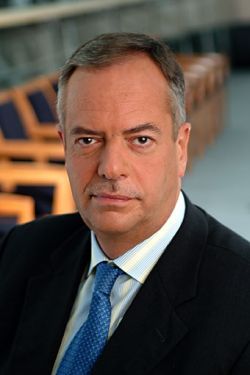Ten lessons from the 2014 European presidential election
#CriticalThinking
Secretary-General of the European Parliament
Last year’s elections to the European Parliament were different. As well as registering significant advances for eurosceptic parties, they were decisive in securing the election of Jean-Claude Juncker, lead candidate of the European People’s Party, as president of the European Commission.
Some national capitals bitterly resisted this change away from the old system under which the Commission president was appointed by heads of government after hours of haggling behind closed doors. However, the Parliament stood its ground, used its new powers under the Lisbon treaty to ensure that Juncker – whose political group won the most seats in the May election – was able to begin his five-year term in November.
This was an undoubted success for the Parliament. However, questions remain about the election campaign itself. It’s unclear to what extent voters felt they were electing Europe’s CEO, or if they had any real sense of participating in a Europe-wide campaign that gave them a say in shaping policies and priorities for the Commission’s coming term.
Although the slide in voter turnout tailed off last year, it cannot be said that the European campaign caught fire. National parties fighting national campaigns on national issues still too often remained the norm.
Policy differences between the principal contenders were muted, and the televised debates between them tended only to be taken up by minority channels. Campaign managers faced a wall of scepticism. There was widespread disbelief in the media that the 28 heads of government would allow the EP elections to decide who takes Europe’s top job.
Campaigners faced an uphill struggle to explain that voting for local candidates – for Swedish conservatives or social democrats, for example – could ensure the election of Juncker, or his Socialist rival Martin Schulz, to the Commission presidency.
Nevertheless, the so-called “spitzenkandidaten” (lead candidate) process worked, and its credibility has now been established. We still need to look at what should be improved. Getting it right for the next election in 2019 could bring significant democratic gains in Europe’s governance.
Here are ten lessons from the 2014 experience:
1. The European political parties – like the European People’s Party and the Party of European Socialists – were fighting a pan-European battle for the first time, but the authority to shape the campaign remained mostly with their national member parties. More cooperation is needed to give the European parties greater ownership of the campaign. This could be done by having a small steering group bringing together leading figures from member parties and the European campaign manager on a daily basis.
2. The European parties lack the financial and human resources needed to conduct a Europe-wide campaign. Public funding must be increased sharply and staff from EP political groups should be allowed to campaign in European elections.
3. Policy foundations and think tanks close to the European parties need to take a more prominent role in policy formation to bolster the content of campaign manifestos. In 2014, pan-European messaging was often lightweight, based on lowest common denominators and with few eye-catching proposals.
The three largest parties were too hesitant in highlighting differences between them. This was in part because of the novelty of the process, but it was also down to sensitivities inherent in a pan-European campaign. Particular policies – European debt mutualisation springs to mind – might be widely popular in one country, but a major vote loser in another.
4. The parties on the whole used social media successfully, but they need to do more to motivate voters. Social media campaigns should be reinforced with targeted direct mailing and outreach to civil society.
5. The campaigns started far too late. Candidates were selected only a couple of months before the elections. The teams they put in place were almost overwhelmed by the challenge of introducing the first Europe-wide presidential hopefuls to around 400 million voters from 28 countries in just a few weeks.
6. Holding primaries would have triggered an earlier interest and conferred greater legitimacy on the presidential nominees. The parties missed a trick by not involving activists and sympathisers directly in candidate selection.
7. Failing that, conventions of elected delegates from around the regions should vote for the parties’ candidate. Parties applying a grass-roots approach in the selection of convention delegates should benefit from extra funding to support this move towards internal democracy.
8. Holding Europe-wide TV debates was positive, but it would have been more effective to concentrate on prime-time events with key national broadcasters rather than specialist Europe-wide media.
9. Candidates should no longer have to waste precious time defending the idea that the winner will become Commission president. The credibility of the process is now established, leaving more time for policy debate.
10. Lead candidates need to be given more visibility to increase their name recognition. European political parties should be authorised to give financial support to national parties to promote common candidates, for example through buying time on broadcasts or space in print media. The lead candidates’ names could be included on ballot papers in all countries. The presidential candidates should be allocated broadcasting time on top of that granted to national parties.
In 2014, European parties performed minor miracles with meagre resources and precious little time. Lessons now learned from this shaky start could make the 2019 European elections transformative for European democracy.
Sir Julian Priestley and Nereo Peñalver García’s book, ‘The Making of a European President’ was published by Palgrave Macmillan in May 2015.
Stay informed
